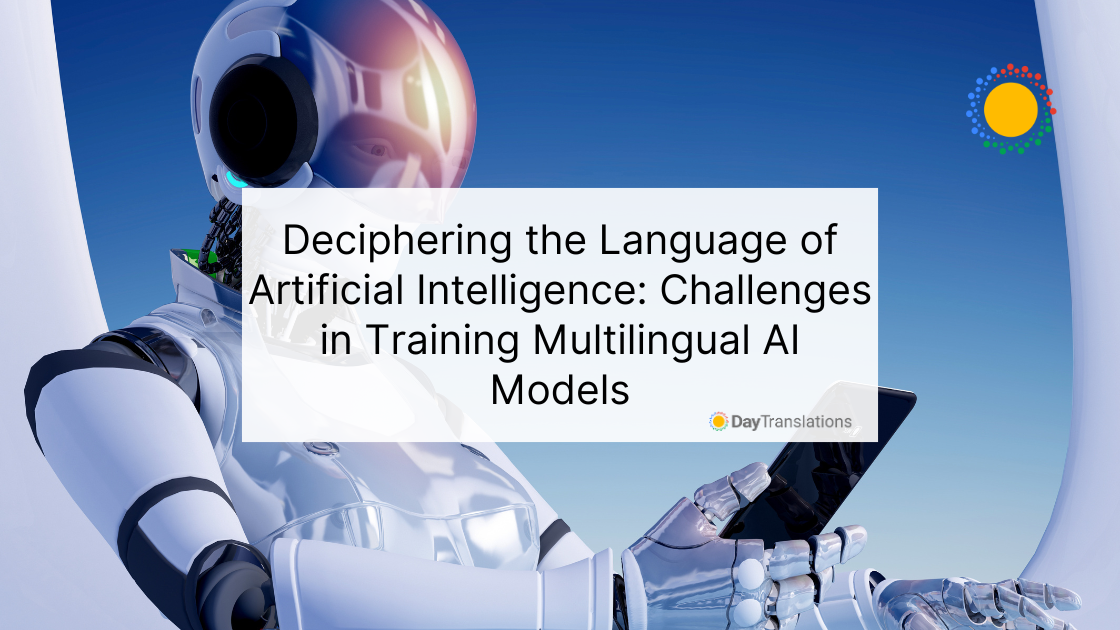Artificial Intelligence (AI) has made tremendous strides in natural language processing, ushering in a new era of communication between humans and machines. With the advent of multilingual AI models, the boundaries of language and culture seem less formidable, bridging gaps and connecting people across the globe. However, beneath the surface of this remarkable achievement lie numerous challenges and complexities in training these models effectively. In this article, we delve into the intricacies of training multilingual AI models, highlighting the issues of bias and fairness that are inherent to the process.
The Multilingual AI Revolution
Multilingual AI models, such as OpenAI’s GPT-3, Google’s BART, and Facebook’s mBART, have gained immense popularity due to their ability to understand and generate text in multiple languages. These models are pre-trained on vast amounts of text data from diverse linguistic sources, enabling them to perform a wide range of language-related tasks, from translation to sentiment analysis. The promise of these models lies in their potential to facilitate global communication, break down language barriers, and make information accessible to people regardless of their native tongue.
Challenges in Training Multilingual AI Models
Data Imbalance
One of the primary challenges in training multilingual AI models is the inherent imbalance in the availability of training data for different languages. Languages like English and Chinese have abundant text data, while many others have very limited resources. This imbalance can result in models that are biased towards the languages with more data, leading to subpar performance in underrepresented languages.
Cultural Bias
Language is deeply intertwined with culture, and AI models trained on large datasets can inadvertently carry cultural biases. These biases can manifest in the form of stereotypes, offensive content, or favoring certain dialects over others. For example, a multilingual AI model might be better at understanding and generating content in standard American English but struggle with African American Vernacular English.
Translation Challenges
Multilingual AI models often rely on machine translation to understand and generate text in different languages. However, translation errors can introduce inaccuracies and misunderstandings. Nuances and idiomatic expressions may get lost in translation, leading to miscommunication and misinterpretation of user inputs.
Low-Resource Languages
Many languages have limited digital footprints, making it challenging to train AI models effectively. Low-resource languages may not have enough data to build robust language models, which results in poor performance for speakers of these languages and hinders the AI’s inclusivity.
Code-Switching
In multilingual societies, people often switch between languages within a single conversation. AI models must adapt to these code-switching patterns, which can be complex and context-dependent. This adds another layer of difficulty to the training process.
Bias and Fairness in Multilingual AI Models
Addressing bias and ensuring fairness is a critical concern when training multilingual AI models. Bias can seep into these models in various ways:
Data Bias
Bias in training data, stemming from historical disparities or the prevalence of certain linguistic sources, can lead to AI models favoring particular languages or dialects.
Cultural Bias
AI models can inherit cultural biases from the text data they are trained on, perpetuating stereotypes, and inadvertently promoting discrimination.
Gender and Identity Bias
Multilingual AI models can exhibit bias with respect to gender, ethnicity, or other aspects of identity. This can result in biased responses to user queries.
Language Hierarchy
Models may prioritize dominant languages over others, reinforcing linguistic hierarchies and disadvantaging less widely spoken languages.
Mitigating Bias and Ensuring Fairness
To address these challenges and promote fairness in multilingual AI models, researchers and developers are taking several steps:
Diverse Training Data
Incorporating more diverse training data is essential. This includes underrepresented languages and dialects, to reduce bias and improve model performance.
Bias Audits
Regular audits are essential to identify and mitigate bias in AI models. This includes evaluating model responses for fairness and removing or retraining on biased data.
User Feedback
Developers actively seek feedback from users of multilingual AI systems to identify and rectify issues related to bias, offensive content, or fairness concerns.
Multidisciplinary Teams
Collaborative teams involving linguists, ethicists, and sociologists work together to ensure a holistic approach to training and evaluating multilingual AI models.
Wrapping Up
Multilingual AI models have the potential to revolutionize communication across language barriers, but their training poses numerous challenges and complexities. Issues related to bias, fairness, and data imbalance are critical concerns that demand continuous attention and research. Striking the right balance between technological advancement and ethical responsibility is essential to unlock the full potential of multilingual AI models while ensuring that they serve all users equitably, regardless of their language or culture. In an increasingly interconnected world, addressing these challenges is imperative for the responsible development and deployment of AI technologies.














Sorry, the comment form is closed at this time.